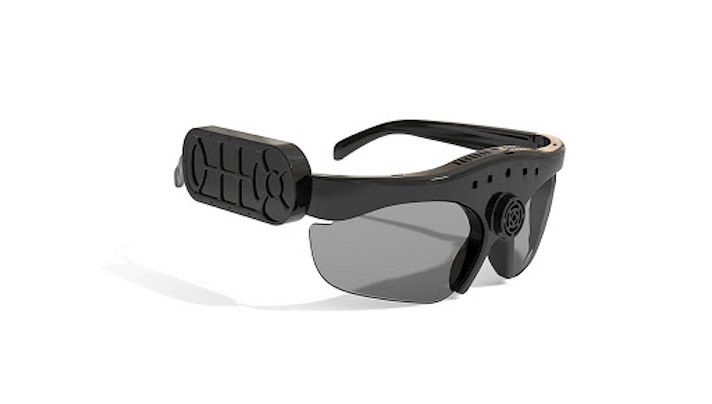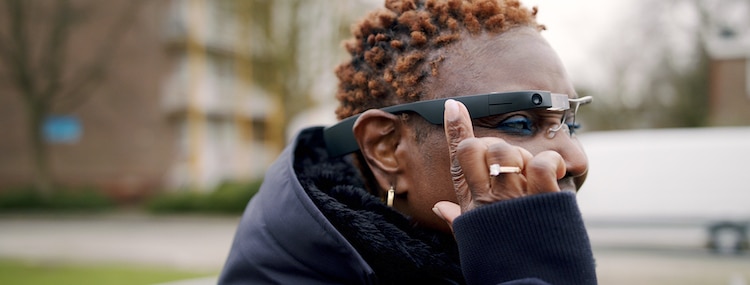Empowering Independence With Assistive Modern Technology for the Blind
The assimilation of assistive innovation for individuals who are blind or aesthetically impaired stands for a substantial development in fostering freedom and boosting quality of life. With a variety of tools-- from display readers to ingenious tactile tools-- these innovations not just assist in navigating and interaction however likewise promote social addition and participation in various facets of life.
Recognizing Assistive Modern Technology
Although assistive innovation has progressed substantially over the years, its essential objective remains the exact same: to enhance the lifestyle for individuals with impairments, specifically those who are visually impaired or blind. This innovation includes a wide series of tools and tools that assist in independence and functionality in everyday activities.
Assistive innovation can be categorized into state-of-the-art and low-tech options, each developed to fulfill specific needs. High-tech gadgets usually include software applications, specialized hardware, and adaptive gadgets that utilize advanced technology to give support in different contexts. Alternatively, low-tech solutions may entail everyday things that are changed to enhance accessibility, such as magnifiers or tactile markers.
The assimilation of assistive modern technology right into the lives of people who are blind or aesthetically hindered not only advertises autonomy yet likewise fosters social addition and involvement in academic and specialist settings. By leveraging these innovations, individuals can navigate their environments, access information, and connect effectively, thus improving their general quality of life. Comprehending assistive technology is essential for professionals, caretakers, and supporters who aim to sustain individuals in maximizing their prospective and attaining higher independence.
Kinds of Assistive Gadgets
Assistive devices for the blind and aesthetically damaged are vital tools that boost daily obeying attending to certain difficulties encountered by individuals. These devices can be extensively classified into 3 primary kinds: optical devices, digital tools, and sensory gadgets.

Sensory devices, such as Braille displays and tactile maps, supply alternate methods to receive details. Braille displays convert digital message right into Braille, making it possible for individuals to review touch. Tactile maps provide spatial understanding with elevated lines and structures, enabling for better ecological awareness.
With each other, these assistive gadgets empower individuals with aesthetic problems to involve even more totally with their surroundings, promoting better freedom and confidence in daily activities.

Influence on Daily Life
The integration of assistive innovation into the day-to-days live of individuals that are visually impaired or blind substantially boosts their ability to interact and browse with the globe around them. Tools such as screen readers, Braille shows, and mobile applications promote access to details, permitting individuals to involve with digital content, connect effectively, and take care of day-to-day jobs individually.
Moreover, technologies like clever glasses and navigating applications provide real-time assistance in unfamiliar settings, improving wheelchair and confidence. These devices allow individuals to determine obstacles, reviewed indications, and even recognize faces, thus promoting a sense of autonomy in public rooms. Furthermore, home automation systems, which can be managed via voice commands, permit individuals to manage their living atmospheres more click now successfully, improving convenience and safety.
The effect of assistive modern technology extends past practical jobs; it promotes social inclusion and emotional health. By linking the space between people and their environments, these technologies equip individuals to get involved completely in area activities, seek instructional chances, and involve in meaningful relationships. Inevitably, the improvement of assistive modern technology contributes in redefining the possibilities for individuals who are visually impaired or blind, resulting in an extra inclusive and obtainable society.
Success Stories and Testimonies

Another powerful testimonial originates from Mark, a recent college grad that utilized display reading software application throughout his scholastic journey. This modern technology enabled him to gain access to training course products and join discussions, ultimately leading to his effective transition right into the labor force. Mark credits assistive modern technology for encouraging him to achieve his career objectives, highlighting its duty in leveling the having fun field for individuals with aesthetic problems.
Additionally, recreation center have actually reported boosted engagement in their programs many thanks to the introduction of available electronic systems. These platforms have actually made it less complicated for individuals to attach, share sources, and assistance one another. These success tales collectively underscore the extensive impact of assistive modern technology in fostering independence, enhancing lifestyle, and breaking down obstacles for the blind and visually damaged area.
Future Fads in Assistive Tech
Emerging innovations are poised to transform the landscape of assistive technology for individuals that are aesthetically impaired or blind. Advancements in man-made intelligence (AI) and artificial intelligence are enhancing the capabilities of tools, allowing even more intuitive customer experiences. For instance, AI-driven applications are significantly able to identify things and review text out loud in real-time, supplying individuals with valuable information regarding their surroundings.
Additionally, improvements in wearable modern technology are producing new opportunities for independence. Smart glasses furnished with augmented fact functions can overlay critical information onto the customer's field of view, assisting in check it out navigating and communication with the atmosphere. The combination of Web of Things (IoT) devices is simplifying availability in clever homes, enabling individuals to regulate devices and get alerts via voice commands or responsive interfaces.
The development of braille screens and responsive responses systems is also rising, promoting accessibility to electronic material and enhancing communication. As these technologies remain to advance, they promise to enhance day-to-day living, instructional possibilities, and employment prospects for individuals with aesthetic disabilities. Constant collaboration between technologists, users, and campaigning for groups will be crucial in making sure these innovations meet the demands of the neighborhood successfully.
Final Thought
In verdict, assistive modern technology plays an essential role in enhancing the independence of people who are visually impaired or blind. By providing vital devices and resources, these technologies promote boosted navigating, access, and communication to info, therefore fostering freedom and confidence. The transformative influence of assistive gadgets not just promotes reliable content communication with the atmosphere yet also encourages social addition and involvement in various facets of life, eventually equipping users to flourish within their areas.
The assimilation of assistive modern technology for individuals that are aesthetically damaged or blind represents a considerable improvement in fostering independence and boosting quality of life.The integration of assistive modern technology into the lives of people who are blind or visually impaired not just promotes autonomy but likewise fosters social incorporation and participation in specialist and educational environments. Ultimately, the advancement of assistive technology is instrumental in redefining the possibilities for people who are aesthetically impaired or blind, leading to an extra inclusive and available society.
Numerous individuals that are blind or aesthetically damaged have shared inspiring success stories that highlight the transformative influence of assistive innovation on their lives.In conclusion, assistive technology plays a critical role in enhancing the freedom of people who are blind or visually damaged.